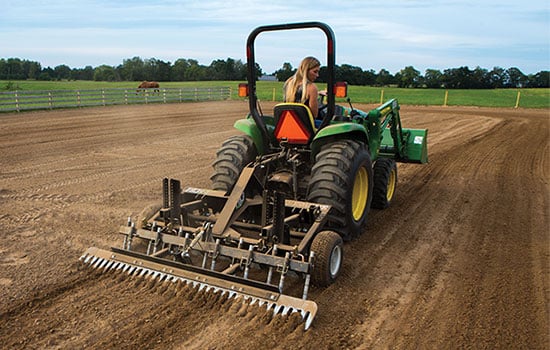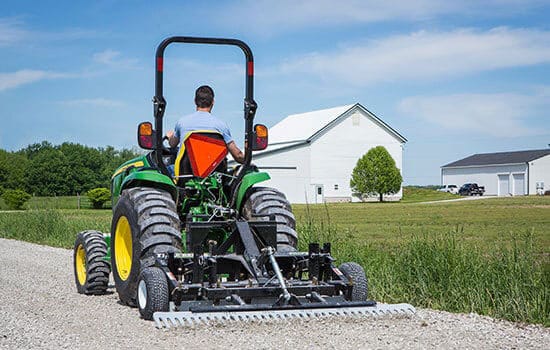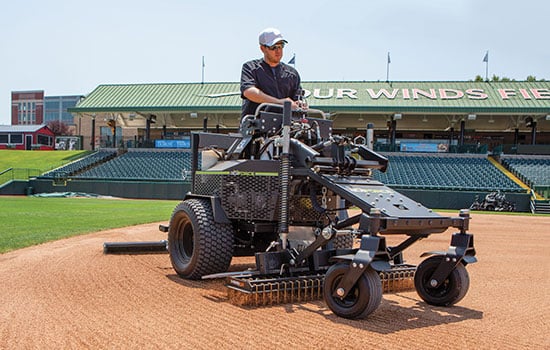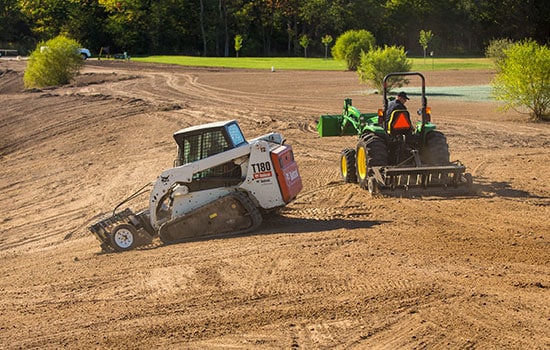What’s The Difference: Air Filled Vs. Foam Filled Tires On Groundwork Attachments
Why we pair our attachments with specific tire types.
Ever wondered why some of our attachments use air-filled tires while others use the more hefty, never-flats? Matt is here today to talk all things tires: the different types, what they do, and the attachments that utilize them.
For more information on these or other attachments visit us at abiattachments.com or call a Product Specialist at 877.788.7253
ABI Products Shown In This Video
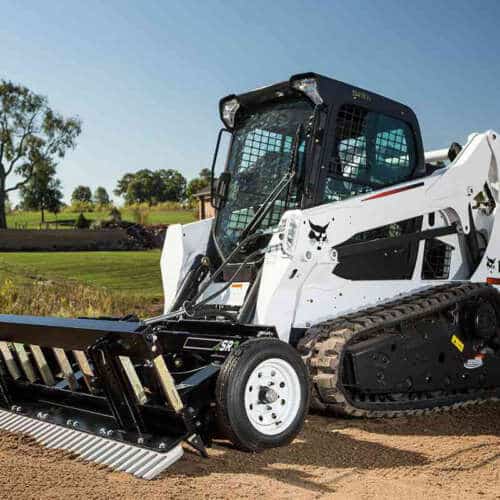
SR3 Grading Rake
- For Skid-Steer Loaders (SSL) & Compact Track Loaders (CTL)
- 7.5' Width - Commercial-Duty
- Starting At: $207/mo.*
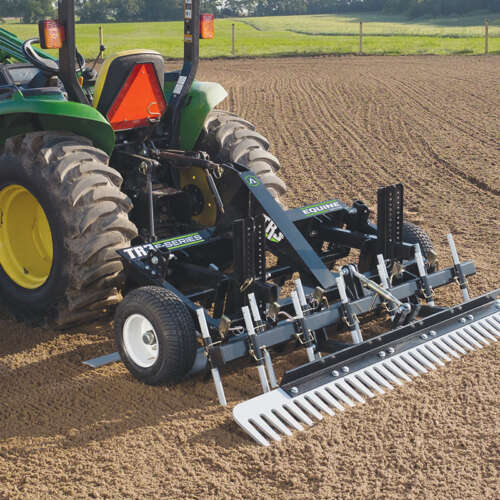
TR3 “E” Equine Edition
- For Sub-Compact & Compact Tractors, #1 Selling Arena Drag
- 6', 7', 8' Widths
- Starting At: $123/mo.*
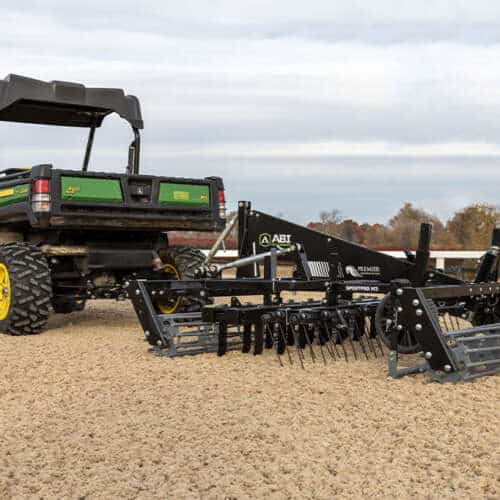
SportPro M3
- For Large ATVs, UTVs, Compact, or Sub-Compact Tractors
- 67.5", 83.5" Widths
- Starting At: $168/mo.*
Transcript
Hi, everyone, Matt here with ABI Attachments. Welcome back to the “ABI Dirt.” As you know here at ABI Attachments, we take a lot of joy in building products that are really intentionally crafted just for you and your purposes. Now that’s why we have an in-house engineering team and why we think so highly of them because when we hear of a need when it comes to groundwork that needs to be done, we craft a tool specifically for that purpose, which means we put a lot of thought into what bolts and what size and what tire and how big. But not always do we take the time to explain why we put so much thought into one particular component and why this attachment has this component, and this tool has this thing instead of that thing.
So every now and then, we like to do a “Dirt” episode like this one and talk through a specific component. And as you can tell, because I know you’re all so observant, today we’re talking about why we’ve decided to use the tires that we use on our different attachments. Now, if you followed us here on the “ABI Dirt” for any length of time, you know that every now and then, I go on a rant about how a tire’s not just a tire here at ABI Attachments, but it’s actually a miraculous device that gives you control over your ground engagement.
Getting to the Worksite with Transport Tires
When you have a tire or wheel on an attachment, that means that it’s going to keep your attachment above the surface or right on the surface so that you know exactly how deep your ground-engaging components are gonna go. That being said, we do have a lineup now, a product line here at ABI Attachments, that does use tires for transport purposes. Now this little guy here, you can find him on some of the models of the SportPro lineup.
The purpose of this guy is to transport your SportPro arena drag attachment from the barn, from back behind the barn, into the arena. Once you’re in the arena, you can pull this guy out of play and drop the attachment down. Now, lest you think we have walked away from the doctrine of depth control to make sure that you have the control you need in the arena, remember on that SportPro line, you have the option of either one or two rolling baskets on those units. And those baskets provide you with a level plane to give you the control you need so that your ground-engagement components can go exactly as deep as you want them to go. That’s why we can use these as transport wheels.
Differences Between Air and Foam Filled Tires
Now, once you’ve stepped away from that SportPro line, now you’re taking a look at the difference between this guy here, the air-filled tire, and something that is foam-filled, what we’d like to call our never-flats around here. So how do we determine when to use one or the other? In contexts, and I’m gonna use sweeping generalities here.
When Air Filled Tires are Best
In contexts where you’re very intentional about the compaction that you’re working with, so think leveling your horse arena footing. Think about maybe planting food plots, your garden plots. Think about the driveway that you’ve got, right? In situations that you want to spread out the weight of the attachment, where you really wanna make sure that when you’re passing through that ground space that you’re loosening things up with your ground-engaging components, and you’re not re-compacting things, then we opt for the air-filled tires.
Attachments with Air Filled Tires
So think about your TR3 E Series Equine Edition, the Property Edition. Think about your Arena Rascal Pro, your Gravel Rascal Pro, or, and I don’t have the tire here because it’s massive, think about if you’ve seen the ABI DragMaster Elite arena drag. That actually… We have actually four different tires on that unit, and if you get the big boy, 500 gallon water, now you’re talking big old, super-big inflation tires that ride across the surface, keep the weight of that drag distributed so that you can de-compact the surfaces, get the kind of arena footing or get that loose gravel driveway if you’re talking about the gravel rascal or the TR3 E Property Edition. You wanna loosen up the surface and not re-compact it with the weight of your tires. That’s why you opt for the air-filled tires.
We also use air-filled tires on attachments that most likely are not going to be used eight, 10 hours a day. These are attachments, again, if you’re dragging the arena once a day, multiple times a week, even on bigger arenas that you’re dragging multiple times a day, you’re not using it probably 12 hours a day. It’s probably parking for a little bit. That’s when we opt for air-filled tires.
When Foam Filled Tires are Best
Going over to the never-flats, going over to the foam-filled, you can see me struggle to lift that up right then. These are much heavier, much denser. These are filled with foam. I’ve teased a couple of times here in the “Dirt,” if you ever get a TR3 rake or if you ever get a SR3 Grading Rake, and you notice, “Hey, there’s a screw in my tire,” that’s because that’s part of the process of filling this thing with foam.
These are used in scenarios where maybe you’re a little bit less concerned about the compaction from the attachment. So we’re talking about rough-grade scenario, final-finish scenario. Picture you’re pushing brush. You’re pushing over saplings. You’re clearing land.
Attachments with Foam Filled Tires
What that TR3, SR3, what those are designed for is for really that heavy dirt work. These are tools that have been designed specifically for those of you who are in the seat of your tractor or in the cab of your skid steer, your track loader, for six, seven, eight hours a day, some of you, this season right now, spring season, 12, 14 hours a day. You need a tool that can keep up with you.
We fill these buggers with foam so that you don’t have to worry about flat tires, but you still get the advantage of gauge-control wheels because in those scenarios, you’re still also thinking about how deep you wanna go. You wanna make sure that you’re not ripping too deep, so you still need a depth-control wheel, but you need it to be rough, tough, heavy-duty so that it can keep up with you all day long on the job site.
Ask Us Your Attachment Questions
I hope that was insightful. For those of you who may have one of the attachments I listed, or if you’ve ever noticed as you’re cruising around the website, “Man, it looks like this tire’s different than that tire. I wonder why they do that,” hope this helped out. But remember, this is why we do these episodes, is to help give you some kind of behind-the-scenes look. So if you own an ABI Attachment, or if you’ve just seen pictures or videos, or again, if you’ve been around the website or social media, and you’ve seen some products out there, and you wonder like, “Well, why does that tool have that thing, and mine doesn’t have that thing,” or “I’m just I’m so curious about the difference between these two and why you opted for, you know, a tube frame as opposed to an angle iron and I-beam frame. What’s the deal?”
That’s actually what the comment boxes are for. So if you have a question, if you’d like to know more about a specific component or part or piece on an ABI Attachment unit, drop us a comment. Let us know. We’d love to answer your questions. And don’t forget to like this video, if you did like it, and subscribe to the channel so that you don’t miss future insights. Until next time, everyone, take care.
